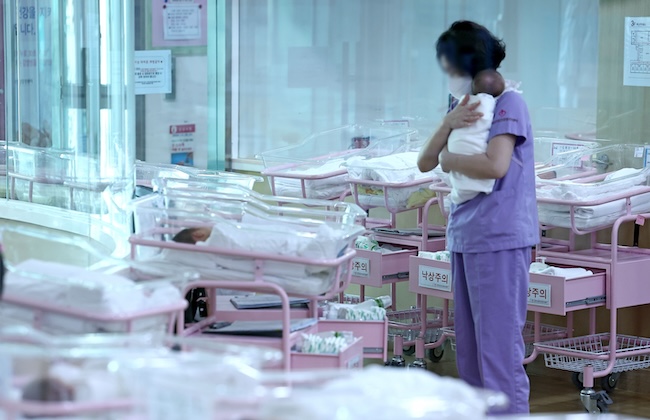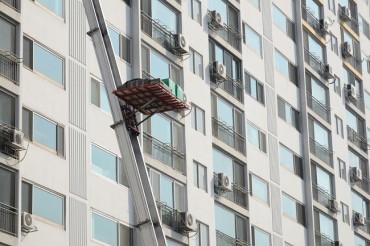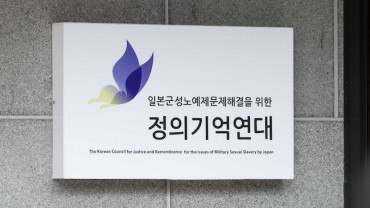
A worker holds a baby at a public postnatal care center in Seoul in this file photo taken Dec. 26, 2023. (Image courtesy of Yonhap)
SEOUL, Sept. 25 (Korea Bizwire) — The number of babies born in South Korea rose by the largest margin in 12 years in July as the country is struggling to address the grim demographic changes of ultra-low birth rate and rapid aging, data showed Wednesday.
A total of 20,601 babies were born in July, up 7.9 percent, or 1,516 babies, from a year earlier, according to the data compiled by Statistics Korea.
It marked the largest on-year increase for any July since 2012, when the country saw 1,959 more newborns.
The growth came as more couples held weddings from the second half of 2022 through the first half of 2023 after delaying their marriages during the earlier stages of the COVID-19 pandemic, the agency said.
During the first seven months of 2024, however, the number of babies born fell 1.2 percent to 137,913 amid the falling fertility rate.
The total fertility rate, which means the average number of expected births from a woman in her lifetime, came to a record low of 0.71 in the second quarter of 2024.
The figure was far below the 2.1 births per woman needed to maintain a stable population without immigration.
The number of deaths inched up 0.4 percent on-year to 28,240 in July, and the population, accordingly, declined by 7,639.
The number of deaths has outpaced that of newborns since the fourth quarter of 2019.
The number of couples getting married surged 32.9 percent on-year to 18,811 in July.
It was the largest increase for any July since 1981, when the agency began compiling data.
The number of couples getting divorced grew 5.9 percent on-year to 7,939, the data showed.
South Korea is experiencing grim demographic changes, as many young people opt to postpone or give up on getting married or having babies in line with changing social norms and lifestyles.
Many have also pointed to high home prices and a tough job market as major reasons.
South Korea is expected to be a highly aged society by 2072 as the median age will increase to 63.4 by the time from 44.9 in 2022, and the population will tumble to around 36 million in 2072 from this year’s 52 million.
Its population peaked in 2020 and has been on the decline.
(Yonhap)






